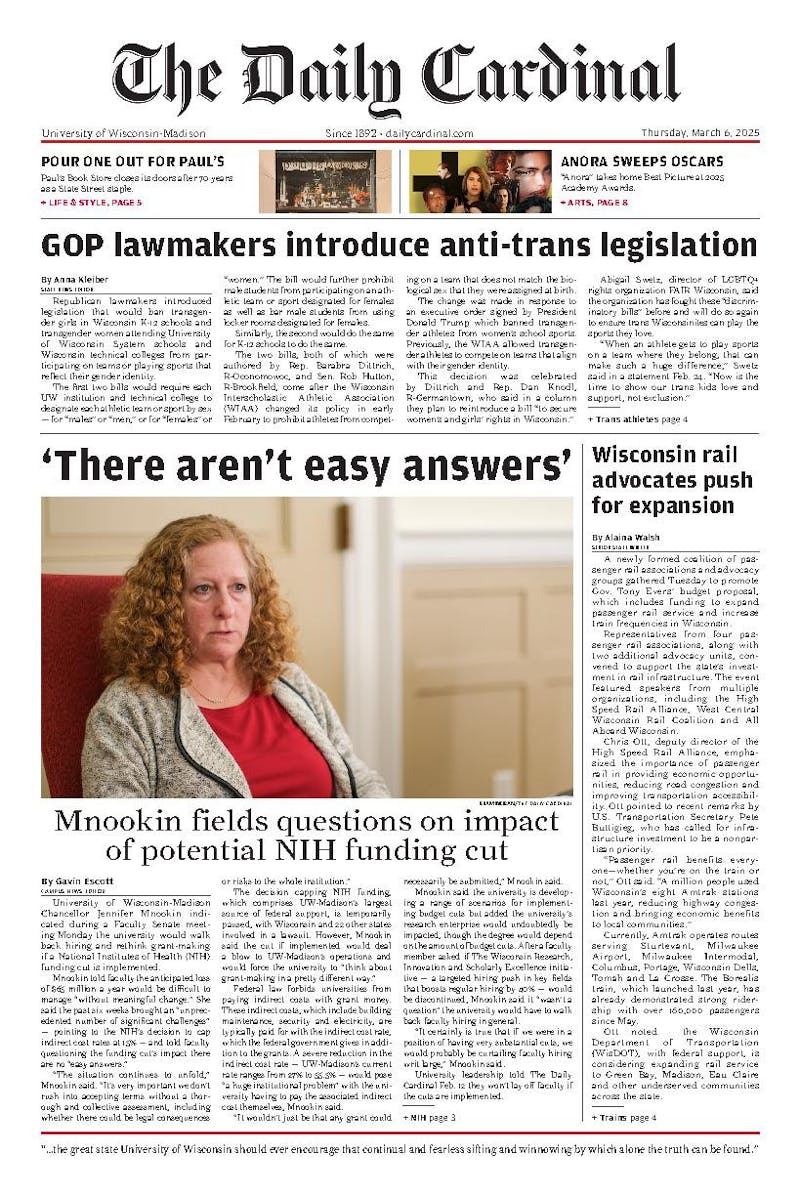As part of the U.S. Department of Education, the Federal Student Aid (FSA) is the largest provider of student financial aid in the United States. Each year, FSA helps make college education accessible for more than 10 million students.
Oct. 1 marked the first official day of the free application for federal student aid (FAFSA). Here is what University of Wisconsin-Madison students need to know about the FAFSA:
What is the FAFSA?
The FAFSA application uses prior tax information which includes tax forms, balances of savings and checking accounts to help determine a student's eligibility to receive financial aid. For the 2023-24 school year, FAFSA will use 2021 tax information. Students who fill out the FAFSA can apply to receive federal grants, work-study and loans which can be used to help pay for college or career school.
Once the applicant completes the form, they will receive a student aid report (SAR), which is used to calculate the level of financial need. In the SAR, there’s a number called the EFC — expected family contribution — which is the number used by applicants’ schools to calculate how much financial aid they are eligible for.
Which students are eligible for the FAFSA?
United States citizens and eligible non-residents are able to apply for FAFSA. A non-resident can be defined as an individual who has a green card or is considered “a permanent resident alien,” according to the FSA.
Students who believe they won’t qualify for any financial aid should still try to fill out the FAFSA.
“Oftentimes, there might be scholarships that look at the FAFSA or will need to have the FAFSA on file,” Financial Aid Security Track (FASTrack) and Badger Aid for Nonresidents (BANNER) Manager Joselyn Diaz-Valdes said. “The other thing is, you might not be able to qualify for grants or free money, but you might need a loan. A loan can help you cover some of your expenses and it's better to apply earlier and have that set because if you decide you don't want it, you don't have to accept it.”
What types of financial aid do the FAFSA provide?
There are two different types of financial aid: need-based and non-need based. Need-based aid is calculated by the cost of attendance (COA) subtracted by your EFC, while non-need based is from all other sources like your school or private scholarships.
There are four federal need-based programs: Federal Pell Grant, Federal Supplemental Educational Opportunity Grant (FSEOG), Direct Subsidized Loan and Federal Work-Study. A direct subsidized loan is available for undergraduate students. With a subsidized loan, the U.S. Department of Education pays off the interest that accrues. The Pell Grant on the other hand does not have to be repaid unless there are changes in certain circumstances.
Federal non-need programs include Direct Unsubsidized Loans, Federal PLUS Loan, and the Teacher Education Access for College and Higher Education (TEACH) Grant. Unlike a subsidized loan, an unsubsidized loan’s accrued interest will be paid by the student. A Direct PLUS Loan is a loan for graduates, professional students or parents of undergraduate students.
In addition, with the recent loan forgiveness plan Joe Biden announced in September, students are able to claim up to $20,000 in relief. The forgiveness plan mainly affects those who took out loans in the past.
“Federal Pell Grant recipients may be eligible for up to $20,000 in debt relief, and other federal student loan borrowers may be eligible for up to $10,000 in debt relief,” according to Federal Student Aid.
Those who expect to receive relief have either been informed by the U.S. Department of Education if they qualify automatically or they will need to apply manually. According to the Biden Administration, applications for loan forgiveness will come out in early October.
What are some common myths about the FAFSA, and are they true?
According to Diaz-Valdes, one common myth from high school students is that high school grades will affect your FAFSA application.
“The FAFSA is not looking at your grades — you need good grades to get into the school you want to get into, but the FAFSA is not looking at your grades when you're in high school,” Diaz-Valdes said. “Once you're in college, the FAFSA is looking at your grades, so students have to maintain a certain GPA and completion to continue receiving that financial aid.”
Some high school and college students also think students with non-resident guardians can’t apply for the FAFSA.
“This is a very common myth. ‘My parents are not from this country, they don't have a social security number. But I am from this country, and I can't fill out the FAFSA,’” said Diaz-Valdes. “If a student is a United States citizen or is an eligible resident, they can fill out the FAFSA and be eligible for financial aid regardless of their parent’s status.”
Where do students apply for the FAFSA?
Students or parents will need to create an account through studentaid.gov, where they can fill out the application. Applications for the 2023-24 school year will close on June 30, 2023.
What additional resources are available to UW-Madison students?
UW-Madison offers students a resource called Purposity, a program that pairs a donor to a student's needs. Students can go online to request an item, and then a donor will send them the basic necessity, which may include clothing, hygiene products or bed linens.
“Our office also has tons of different resources,” Diaz-Valdez explained.“We have graduate students in the school of social work helping students with basic needs, looking for food pantry places in town or on campus, or are looking to apply for things like BadgerCare or food share — we can help with that.”
Students seeking additional help from a financial-aid representative can make an appointment through Starfish. Students can also look through UW’s Basic Needs Resources website.






